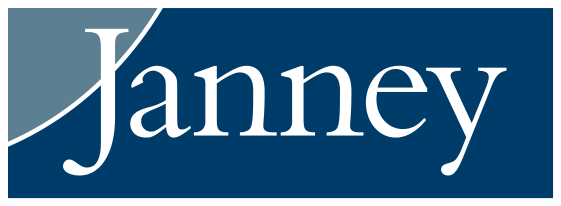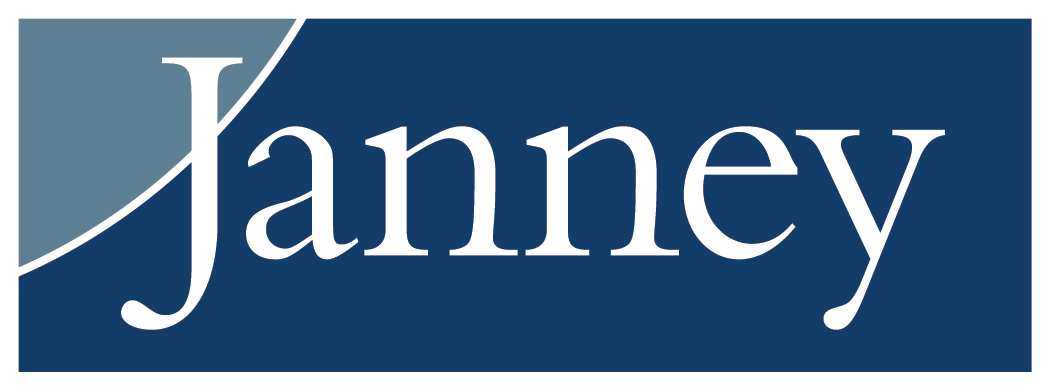A charitable remainder trust (CRT) can be a great way for taxpayers to leverage their generosity, producing tax savings that can be used to provide greater benefits to themselves, their spouses, or others, and then to their favorite charities. Tax savings are generated because taxpayers receive income, gift, and estate tax deductions for the value of their donations, and can defer or avoid capital gains tax when appreciated assets are donated.
What is a Charitable Remainder Trust?
A charitable remainder trust (CRT) is an irrevocable trust used to enable donors (called grantors) to give money or property to charities, while continuing to receive income (fixed or variable) from the property for life or for a period of time up to 20 years. The grantor, and/or other beneficiaries (the income beneficiaries) receive distributions from the trust annually, and the charities (the remainder beneficiaries) receive the assets remaining in the trust when the trust ends. The grantor gets an immediate income tax deduction for the remainder interest (subject to the usual limitations), defers or avoids capital gains tax on the donated assets, and gets gift or estate tax deductions for the remainder interest.
How does a Charitable Remainder Trust Work?
A CRT can be created in two ways:
- Inter Vivos --An inter vivos CRT is created and funded during the grantor's life. An inter vivos CRT is used primarily to provide income security to the grantor and/or the grantor's spouse.
- Testamentary --A testamentary CRT is funded at the grantor's death through a will or living trust. A testamentary CRT is used to provide benefits to heirs and reduce the grantor's taxable estate.
Generally, there are two forms of CRTs:
- Charitable Remainder Annuity Trust (CRAT) --With a CRAT, the annual distributions to the income beneficiaries is a percentage (not less than 5% or more than 50%) of the initial net fair market of the assets used to fund the trust. The payout is fixed and never changes, so if trust earnings are insufficient to meet the required amount, principal must be invaded. Any change in asset value over time accrues to the benefit or detriment of the remainder charitable beneficiaries. This certainty in annual payout makes the CRAT more attractive to older grantors. Additional contributions to a CRAT are not allowed.
- Charitable Remainder Unitrust (CRUT) --With a CRUT, the annual payout is a variable percentage (not less than 5% or more than 50%) of the current fair market of the assets in the trust. Assets are revalued each year--if principal increases, the payout increases. A CRUT is the preferred form for younger grantors who can risk reductions in payouts in return for the potential to hedge against inflation. Contributions to a CRUT can continue.
There are three variations of the standard CRUT, which makes payouts even if principal must be invaded: NI-CRUT (payout can be reduced to avoid invading principal), NIM-CRUT (payout can be reduced to avoid invading principal, but is made up in subsequent payouts), and Flip CRUT (starts as NI-CRUT, flips to standard CRUT at specified date).
Funding a CRT
A CRT can be funded with most types of assets, but since minimum distributions to income beneficiaries are required, it may be preferable to use cash and marketable securities, or to structure the trust as a NI-CRUT, NIMCRUT, or Flip CRUT (see above) to buy time to sell unmarketable assets.
The IRS may require a qualified appraisal for unmarketable assets (e.g., a closely held business or real property).
The present value of the remainder interest to charity must be at least 10% of the fair market value of the trust property as of the date the property is contributed to the trust. For CRUTs, this requirement must be satisfied upon the initial and any subsequent contributions.
Present values are calculated using an IRS formula that includes the following factors:
- The ages of the income beneficiaries, or the fixed term of years
- The annual payout rate
- The IRS discount rate
- The form of CRT
This rule prevents very young income beneficiaries and very high payout rates to older beneficiaries. In such scenarios, it would be possible that by the time the income beneficiary died, there would be nothing left for the charity.
Trust is Tax-Exempt
Generally, both CRATs and CRUTs are wholly tax exempt as long as the trust complies with IRS rules, even though they are only partially charitable. So, say a grantor transfers highly appreciated non-income-producing property to the trust. The trustee can sell the property and invest the proceeds, un-depleted by capital gains tax, in an investment portfolio that may yield a higher return than the donated property.
A CRT that has unrelated business taxable income (UBTI) will not lose its tax-exempt status, but may face an excise tax equal to 100% of the UBTI.
Trust Distributions are Taxable
Generally, distributions from a CRT are taxable to the recipient under a tiered system. If the trust payout is from earned income (e.g., interest dividends, rents), the payout is classified as ordinary income. If the trust payout is from principal, the income is classified as a distribution of long-term capital gain first, then tax-exempt income (e.g., municipal bond interest), then return of principal (tax free, of course).
Income Tax Deduction
Generally, contributions to qualified charities are tax deductible for taxpayers who itemize. The amount of the tax deduction for a transfer to a CRT is usually the present fair market value of the remainder interest to charity (see above), subject to certain IRS limitations (50% of adjusted gross income for gifts of cash, 30% of adjusted gross income for gifts of appreciated stock or real estate) per year. For 2018 to 2025, the limit is increased to 60% for charitable contributions of cash to public charities. Deductions are available for the tax years in which contributions are made, and any unused portions can be carried over to the next five tax years.
If contributions are tangible personal property (e.g., works of art, rare books or coins) or would result in short-term gain if sold, deductions may be limited to the property's cost basis, not fair market value.
Gift and Estate Taxes
Gift and estate taxes will apply on payouts to income beneficiaries who are not grantors or their spouses.
Suitable Clients
- Individuals who have no children or ultimate beneficiaries
- Individuals with non-income-producing assets who want lifetime income
- Individuals with highly appreciated assets that earn a low rate of return (e.g., stock) or cost money to maintain (e.g., land)
- Individuals with concentrated portfolios who want to diversify
Example #1: CRAT
Grantor is an 80-year-old widow with no heirs who owns property with a net fair market value of $1 million, most of which is real estate with a cost basis of $250,000. Grantor is in relatively good health, and is planning to move to an assisted living facility. If grantor sold her property, income tax would be due on the gain at a 15% or 20% tax rate.
Instead, grantor creates CRAT, naming her husband's alma mater as charitable beneficiary, as follows:
- Trust Term: 20 years
- Funding Amount: $1 million
- Growth of Trust: 5.5%
- Annuity Payout Rate: 5%
- IRS Discount Rate: 3%
- Annual Amount to Grantor: $50,000 Paid Quarterly at End of Period
- Gift to Charity: $1,138,384
- Income Tax Deduction: $247,794
Example #2: CRUT
Grantors are a married couple, both aged 55, with high-paying jobs who are concerned about conservation. Grantors own marketable securities that cost them $50,000 which are currently worth $200,000. They would like to reduce their income taxes and make a gift to a charitable conservation organization. If they sold the securities, income tax would be due on the gain at a 15% or 20% tax rate. They create a CRUT instead, as follows:
- Trust Term: 20 years
- Funding Amount: $200,000
- Growth of Trust: 5.5%
- Percentage Payout Rate: 5%
- IRS Discount Rate: 3%
- Initial Annual Amount to Grantors: $10,000
- Paid Semi-Annually • Months Until First Payment: 0
- Gift to Charity: $212,084
- Income Tax Deduction: $72,267
Advantages
- CRTs let grantors:
- Give to charity
- Receive income for life or term of years
- Receive immediate income tax deductions
- Reduce or eliminate capital gains, gift, and estate taxes
- Enjoy freedom from investment management decisions and duties
Disadvantages
- Transfers are irrevocable
- Terms of the trust are unchangeable (though assets and charitable beneficiaries may change)
- Assets that pass to charity do not pass to heirs
Working With Janney
Depending on your financial needs and personal preferences, you may opt to engage in a brokerage relationship, an advisory relationship or a combination of both. Each time you open an account, we will make recommendations on which type of relationship is in your best interest based on the information you provide when you complete or update your client profile.
When you engage in an advisory relationship, you will pay an asset-based fee which encompasses, among other things, a defined investment strategy, ongoing monitoring, and performance reporting. Your Financial Advisor will serve in a fiduciary capacity for your advisory accounts.
For more information about Janney, please see Janney’s Relationship Summary (Form CRS) on www.janney.com/crs which details all material facts about the scope and terms of our relationship with you and any potential conflicts of interest.
By establishing a relationship with us, we can build a tailored financial plan and make recommendations about solutions that are aligned with your best interest and unique needs, goals, and preferences.
Contact us today to discuss how we can put a plan in place designed to help you reach your financial goals.
This is intended for use with sophisticated investors. If you believe you have received this document in error, please contact your Financial Advisor.
Prepared by Broadridge Investor Communication Solutions, Inc. Copyright 2022.
Janney Montgomery Scott LLC Financial Advisors are available to discuss all considerations and risks involved with various products and strategies presented. We will be happy to provide a prospectus, when available, and other information upon request.
Janney Montgomery Scott LLC, its affiliates, and its employees are not in the business of providing tax, regulatory, accounting, or legal advice. These materials and any tax-related statements are not intended or written to be used, and cannot be used or relied upon, by any taxpayer for the purpose of avoiding tax penalties. Any such taxpayer should seek advice based on the taxpayer’s particular circumstances from an independent tax advisor.
Related Articles
-
Philanthropic Giving
Tax-Smart Charitable Gifting Strategies
Take advantage of the current tax rules to support the charities you care about and save on your ... -
Philanthropic Giving
Making a Charitable Gift? Consider a QCD
If you are planning to make a charitable gift, it’s important to ensure you distribute the funds ... -
Philanthropic Giving
Optimizing Tax Strategy and Charitable Giving With a Donor Advised Fund
When developing a charitable giving strategy, there are a number of approaches and solutions to c...




